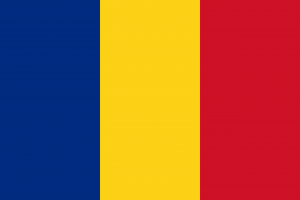Language/Romanian/Culture/Geography-and-Landmarks
As a Romanian language teacher, it's important for me to incorporate cultural information and interesting facts into my lessons. Today, we will be exploring the geography and landmarks of Romania. From the rugged Carpathian Mountains to the rolling hills of Transylvania, Romania is a country of breathtaking natural beauty and rich history. Let's dive in!
Take some time to dive into these other pages after completing this lesson: Romanian Language and Dialects & History of Romania.
Geography
Romania is located in southeastern Europe, bordered by Ukraine to the north, Moldova to the northeast, Hungary to the west, Serbia to the southwest, and Bulgaria to the south. It has a diverse landscape that includes mountains, hills, plains, and a long stretch of coastline along the Black Sea.
One of the most defining features of Romania's landscape are the Carpathian Mountains. These rugged peaks run through the center of the country and are home to some of Romania's most beautiful landscapes, including the Bucegi Mountains and the Fagaras Mountains.
The Danube River is another important geographical feature of Romania. It forms the southern border with Bulgaria and flows eastward through the country to the Black Sea. The river is the second-longest in Europe and is home to a unique ecosystem of wetlands and wildlife.
Regions
Romania is divided into three main geographic regions:
- Transylvania: This is the most famous region of Romania, known for its natural beauty, fairy-tale castles, and picturesque towns. The region is surrounded by the Carpathian Mountains and is famous for its wooded hills and deep valleys.
- Moldavia: This region is located in northeastern Romania and is home to some of the country's most beautiful monasteries and painted churches. The region is known for its rolling hills and agricultural industry.
- Wallachia: Located to the south of the Carpathians, this region is named after the Wallach people who once lived there. It is home to Romania's capital city, Bucharest, as well as historic fortresses and castles.
There are also several other smaller regions in Romania, including Dobrogea and Crișana.
Cities
Romania's cities are as diverse as its geography, each with its own unique history, culture, and traditions. Here are a few of the most important cities to know:
- Bucharest: The capital of Romania and its largest city, Bucharest is an important cultural and economic center. It is known for its Belle Époque architecture, vibrant nightlife, and excellent museums.
- Cluj-Napoca: Located in the heart of Transylvania, Cluj-Napoca is one of the most popular tourist destinations in Romania. It is known for its universities, historic buildings, and vibrant cultural scene.
- Iasi: The second-largest city in Romania, Iasi is located in Moldavia and is considered a cultural and educational hub. It is home to several universities, museums, and historic landmarks.
- Brasov: A popular destination for winter sports enthusiasts, Brasov is located in the Carpathian Mountains and is known for its ski resorts, medieval architecture, and museums.
Natural Landmarks
Romania is home to some of the most beautiful natural landmarks in Europe. From deep gorges to sparkling lakes, the country's landscape is diverse and awe-inspiring. Here are a few of the most important natural landmarks to know:
- Danube Delta: Located at the mouth of the Danube River, the Danube Delta is a UNESCO World Heritage Site and one of the most biodiverse regions in Europe. It is home to thousands of species of plants and animals, including rare birds and fish.
- Turda Gorges: This scenic gorge is located in the Apuseni Mountains and is a popular destination for hiking and climbing. It is known for its dramatic limestone cliffs and crystal-clear streams.
- Retezat National Park: Located in the heart of the Carpathian Mountains, Retezat National Park is home to an incredible array of flora and fauna, as well as several glacial lakes and mountain peaks.
These are just a few examples of the natural landmarks in Romania. The country is also home to several other important landscapes, including the Mud Volcanoes of Buzau and the salt mines of Turda.
Conclusion
In conclusion, Romania's geography and landmarks are a vital part of its cultural heritage. By understanding the country's diverse landscape and important natural and cultural landmarks, you can gain a deeper appreciation for its history and people. I hope this lesson has been helpful and interesting to you. See you in the next lesson!
Sources
Having concluded this lesson, consider checking out these related pages: Romanian and European Identities & Education and Science.
Other Lessons
- Religion and Folk Beliefs
- Moldova Timeline
- Romanian and European Identities
- Romanian Folklore and Music
- Education and Science
- History of Romania
- Romanian Diaspora and Migration
- Media and Entertainment
- Intercultural Communication in Romanian

